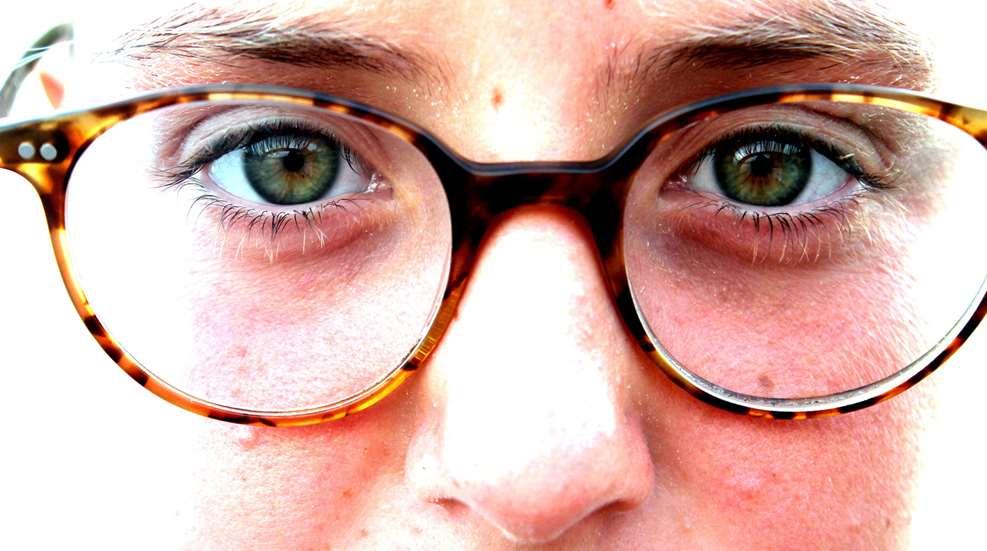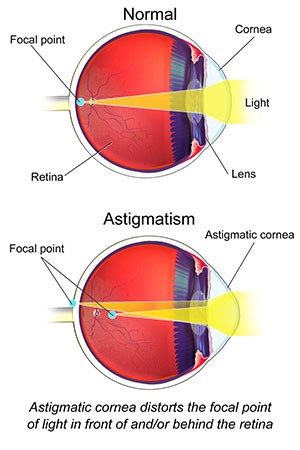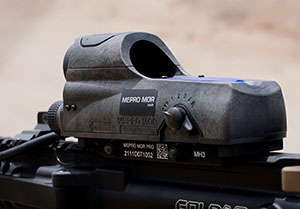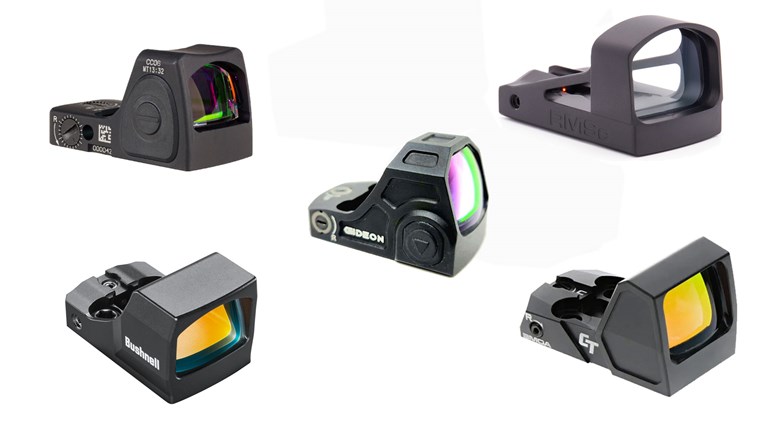
Conventional wisdom states that red dot sights do not work for people whose eyes have astigmatism. While there is some truth to it, the reality is always more nuanced.
Eye astigmatism is a condition where one or both of the two curved refractive parts of your eye structure (sclera and lens) curved in a radially asymmetric manner. That is a fancy way of saying that if you were to look at vertical and horizontal slices of the cross sections of an eye with astigmatism, the curvatures of these two cross sections would look different. The eye's ability to see depends on the image being formed perfectly on the surface of the retina. That is how eye focusing works: the brain sends a signal to the eyeball so that eye muscles force the lens to change shape slightly making sure that the image is on the retina. However, with astigmatism, the image is blurred, since horizontal features are focused at a different distance from the eye lens than vertical features. The brain does not know how to send the right signal to the eye.
Correcting Astigmatism
 Corrective lenses can counter that effect and many eyeglasses do incorporate some astigmatism correction. Mild version of astigmatism is exceedingly common and it usually makes so little difference for day to day life that no one bothers to try to correct it. The reason it makes so little difference is that human visual cortex is very good in correcting it, but some situations challenge that.
Corrective lenses can counter that effect and many eyeglasses do incorporate some astigmatism correction. Mild version of astigmatism is exceedingly common and it usually makes so little difference for day to day life that no one bothers to try to correct it. The reason it makes so little difference is that human visual cortex is very good in correcting it, but some situations challenge that.
It does make a lot of difference for those using red dot sights. When you look through a red dot sight and the aiming pattern is not sharp, there is a good chance you have astigmatism. Now, it is also possible that something is wrong with the sight, but that is easy to check. When you look through a red dot sight, if instead of a dot you see some sort of a mis-shapen structure, rotate the sight by 90 degrees. If the pattern you are seeing rotates, then it is a problem with the optic. If it does not, you have astigmatism in your eye.
Once it is established that you do indeed have astigmatism, there are a few more things to consider. If your astigmatism is not terribly severe, see if you can get your hands on a few different red dot sights. They are, indeed, not all created equal. I have mild astigmatism, and I found that some red dot sights look worse or better than others to me. For example, Leica's Tempus is one of the better ones for my eyes. It is advertised as having an aspherical lens. We do not always know which red dot sights have aspherical surfaces, but the ones that do appear to usually have higher collimation quality and work better for my eyes. I suspect that most modern red dot sights have parabolic or other types of aspheric surfaces, but I also know that some still use simpler spherical optics. Those might not play well with astigmatic eyes, especially if they have a low F-number.
How Does Astigmatism Affect Sight Picture?
Red dot sights that are comparatively long with moderately sized glass window usually have better collimation quality. In lens terms, we are looking for a high F-number optical system (ratio of the distance from the LED emitter to the lens divided by the lens diameter). Meprolight's MOR is a good example of such a red dot sight. Its long body allows for well corrected optics.
Illumination brightness also matters: a small and ultrabright dot will often look most misshapen. Larger dots will often look cleaner. That can happen for a couple of reasons: for starters, a larger area dot maintains high visibility without being ultrabright. Another factor is that it gives some geometry for the brain to process. How exactly our brains process images is not especially well understood, but we do know that a lot is based on pattern recognition. A small dot is perceived as just a bright spot of indeterminate shape, while a large dot is interpreted as a circle with the brain cleaning up the edges a little. For the same reason, sometimes a reticle with a specific pattern (chevron or circle) will look nicely defined, while a small dot in the same optic looks like an elongated comet shape to my eye.

Interestingly, the red dot sights that work reasonably well with my astigmatism also happen to be the ones that do not exhibit a ton of parallax. I suspect it has something to do with the lens shape providing better than average level of correction benefiting both dot sharpness and parallax performance.
Human visual perception is very strongly tied to how we see color and different color dot sights might work better than red. I have never seen a proper study of this done, but anecdotal evidence suggests that amber/gold is least effected by mild astigmatism, followed by green and red. Our eyes are more sensitive to green and amber than to red which might explain some of that, but not all. For example, we see green better than amber, yet amber appears to minimize effects of astigmatism a little more. I do know that I can run a green dot less bright than red and still have good visbility (I measured it with a photometer) and less bright dots work better with astigmatism. However, ultimatley usability depends on the background. A green dot does not stand out all that much against the background of green foliage and amber dot does not have the best visibility in the desert. Trying a different color dot is worthwhile only if your environment is conducive to that. Indoors, all colors work fine. Outdoors is a different ballgame.
Does It Affect Your Aim?
Lastly, if you are seeing a slightly misshaped red dot, does it really matter that it does not have sharp edges? It might or it might not. If you are trying to pick off something at 200 yards, you need that dot to be pretty crisp. On the other hand, if all you are looking for is center-of-mass hits at "across the room" distances, dot shape really makes no difference. In either case it is important to not focus on the dot. With iron sights, you are supposed to focus on the front sight. With red dot sights, you are supposed to do the opposite: focus on the target and let the dot "just be there". Not focusing on the dot will often make it look less deformed.
Ultimately, the specifics of an individual eye's astigmatism are seldom identical for different people and there is no replacement to getting your hands on a variety of different red dot sights to see what works best for you.




































